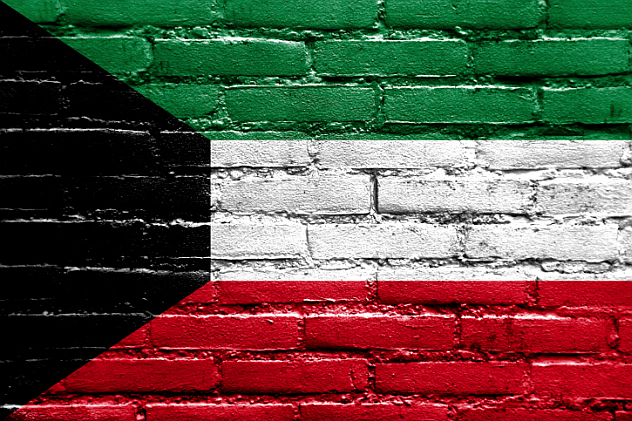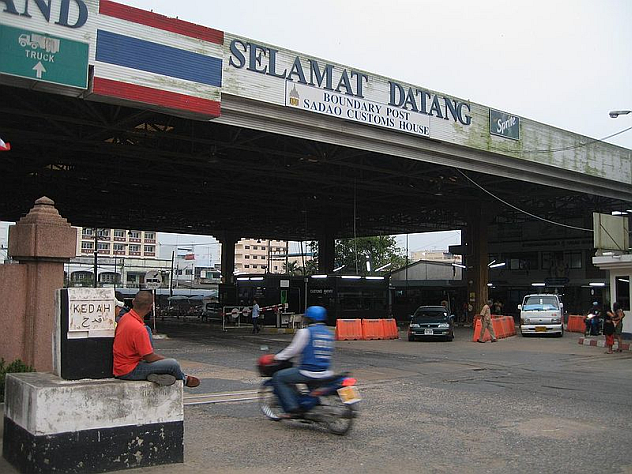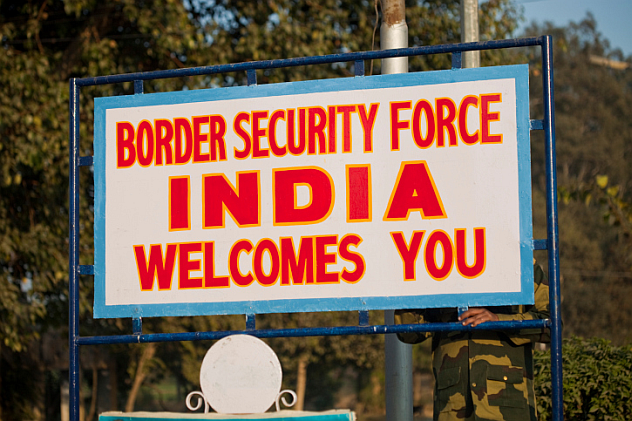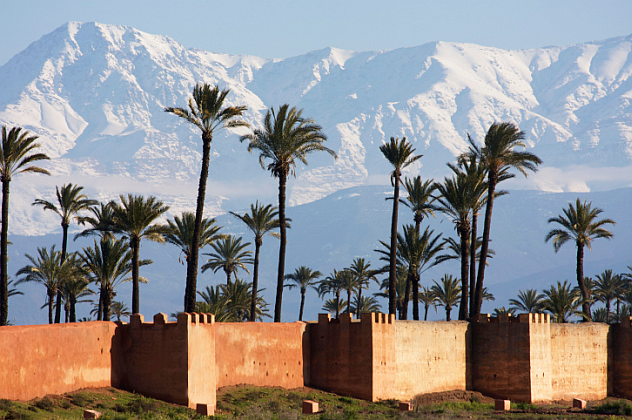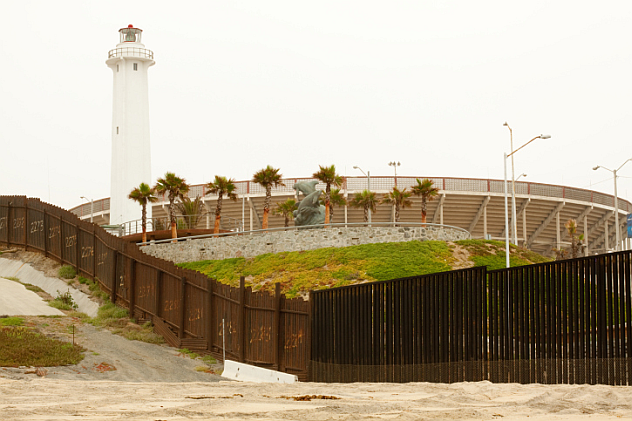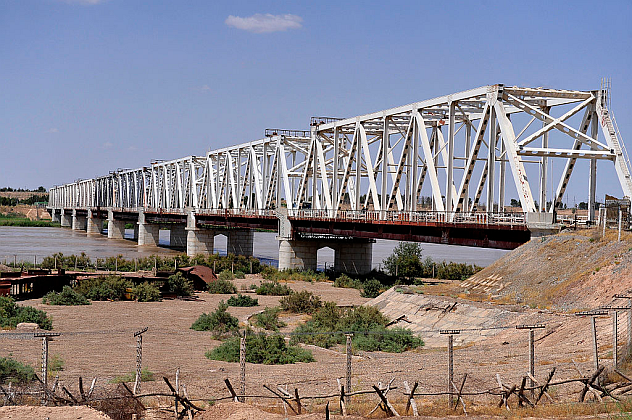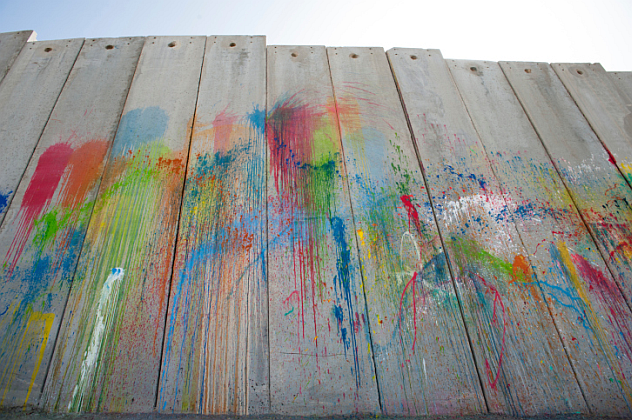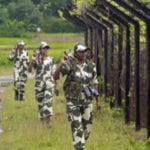But there are over 50 border barriers currently built around the world, such as in Korea, Saudi Arabia (which is almost completely walled in), and just a few miles away from the “The Wall” display, at the Channel Tunnel between the UK and France, with electrified security fencing, electronics, and permanent guards. The latter serves much the same purpose as the West Bank Barrier, and carries many of the same controversies, and the media barely bats an eye. The US is also making efforts to expand its Mexican barriers to cover the entire border. Unfortunately, more walls seem to be springing up all the time.
10 Cyprus Green Line Separation Barrier
In July 1974, the Turkish military used a failed Greek Cypriot coup as a pretense to launch a peacekeeping operation that captured roughly 8 percent of Cyprus. After the coup was dissolved, Turkish forces then advanced to the nation’s cease-fire line (established in 1964) and captured an additional 37 percent of the island, turning the Green Line into a no-cross barrier by 1983. The barrier slices Cyprus in two, separating the Greek Republic of Cyprus from the Turkish-proclaimed “Turkish Republic of Northern Cyprus” (which is unrecognized and condemned by every UN nation except Turkey). Because there was little ethnic separation before the coup, it forced a widespread movement of populations. Two hundred thousand Greek Cypriots were expelled from the North (Turkish) side, and 60,000 Turkish Cypriots were expelled from the south. The barrier consists of a buffer zone, barbed wire fences, watchtowers, anti-tank ditches, minefields, and concrete wall segments. Tensions run high between both sides. As a shopkeeper told the New York Times in 1989, “Here, we are Greek Orthodox; they are Muslims. The green line is there because the communities hate each other.” The situation has eased somewhat. After 30 years of no-crossing policies, several exist now, the first of which was established in 2003 when the president of the TRNC punched holes in the wall on Good Wednesday. Hundreds of people lined up at the Ledra Palace Crossing to revisit family for the first time in years.
9 The Egypt-Gaza Barrier
In 2009, Egypt began construction on a barrier along its Gaza border to reduce the number of smuggling tunnels and stop the flow of contraband, arms, explosives, and militants. When completed, the wall will span 9–11 kilometers (6–7 mi). Unlike the already existing perimeter wall, this one is made of steel and extends 18 meters (60 ft) underground. Its segments come equipped with sensors and hoses used to flood tunnels with sea water. The initial construction ran 9.6 kilometers (6 mi) with Palestinian sources reporting that tunnels nearly 30 meters (100 ft) deep were collapsing nearly daily. Hamas (which calls the barrier a “wall of death” because it fears that it would be used to strengthen blockades) petitioned Egypt to put a halt to it. With the terrorist organization receiving arms, construction materials for more tunnels, and charging operators $2,500 a year for the right to use the tunnels, it’s little wonder. It wasn’t long before the barrier was breached, and construction has been halted and restarted several times. The international community has also hindered the wall’s progress. Both peaceful and violent protests have arisen since an Egyptian guard was killed in 2010. Jordan’s Islamic Action Front issued a fatwa (religious edict) against it that same year. Because it runs through Rafah and disrupts free movement within the city, the wall is often called a separation barrier. Critics contend that the tunnels serve as a lifeline for communities like Gaza by smuggling food and medical supplies, and that this is more important than the tunnel’s value to terrorists and criminals. Egypt had turned a blind eye to the tunnels in the past, but a series of terrorist incidents led them to conclude that they needed to take action. Smuggling tunnels encompass more than Hamas; other terrorist/extremist groups and a well-armed, wealthy criminal class have arisen within both Gaza and the Sinai Peninsula who make use of them. The Sinai city of El-Arish has been an epicenter for these problems, and Egypt is currently building another barrier that will completely encircle it, leaving just 10 entrance and exit points.
8 The Kuwait-Iraq Barricade
After the 1990 invasion of Kuwait by Iraq and the first US-led Persian Gulf War, the United Nations established a demilitarized zone (DMZ) between the nations. In 1993 Kuwait began construction on a 193-kilometer (120 mi) border fence, the Kuwait-Iraq Barricade, overseen by the United Nations Iraq-Kuwait Observation Mission. The first version was a system of barriers and trenches, with over a million land mines. Many of those mines were recycled, planted by Iraqi forces during their 1990 invasion. In 2004, Kuwait announced construction of an additional iron partition along the border. In 2005, Iraqis claimed that the barrier was destroying their property, and construction halted temporarily. That same year, considerable controversy was generated when, under instructions from the USA, Kuwait cut holes in the fence at spaces marked by US Marines to gain entrance into Iraq, some large enough to facilitate the movement of tanks. The UN accused the US of violating UN mandates against military activity in the DMZ, while the US, unconcerned by reprisals, said, “That scenario was not a concern because any war with Iraq would be a justified attack because of Iraq’s treatment of Kuwait in the past and possible mistreatment in the future.” Sure enough, the US invaded just a few days later. Iraq and Kuwait have been antagonistic for a long time while maintaining a veneer of cooperation, going back to Kuwait’s struggle for independence which happened in 1963. Despite independence, Saddam Hussein’s regime felt that Kuwait was a part of Iraq, and partitioning the region with a barrier was an illegal act. There are still many in Iraq who feel the same, and with the troubles facing that region, it’s doubtful that the barrier is going anywhere.
7 The Malaysia-Thailand Border Barrier
The Malaysia-Thailand boundary extends 505 kilometers (314 mi) from the Strait of Malacca to the Gulf of Siam. It demarcated territory between the then-British-controlled Malay States and the Thai Kingdom, stemming from a boundary treaty signed in 1909. Today, the boundary is controlled by both Thailand and modern-day Malaysia. In 1965, both countries formed the Regional Border Committee, a joint committee that oversees security along the border. It was formed, in part, in response to Communist insurgencies. In the 1970s, both countries constructed barriers along the borders to protect themselves. In 1991, Malaysia announced that it would build a concrete wall stretching 96 kilometers (60 mi), separating the Malaysian state of Kelantan from Thailand. While the stated purpose was to curb criminal activity along the border, analysts pointed out that relationships between the nations were strained over territorial arguments, fishing rights disputes, and violent Islamic separatist movements. Malaysia routinely denies that political unrest between the two nations is the reason and carefully avoids mention of violence. Yet in 2007, Thailand Prime Minister Surayud Chulanont supported plans to build yet another barrier along part of the border, and in 2013, Malaysia announced that it is building another wall (with Thailand’s approval) along the Sungai Golok River which separates Kelantan from Narathiwat province. Many Malaysians live along the river, many in illegal jetties. Malaysia’s current Home Minister, Dato’ Seri Dr. Ahmad Zahid Hamidi, has stated that these people will be relocated and illegal jetties destroyed, with all the potential for abuse and misery that this entails. Just this year, amid US calls to act upon human trafficking issues (both nations have received the lowest rankings when it comes to these violations) and with the violence currently tearing the region apart—including a series of bombings in 2012–13—the original barrier fences are to be replaced with modern fencing and security upgrades.
6 The Saudi Arabia–Yemen Barrier
From 1990 (the year Yemen achieved unification) to 2000, tensions between Saudi Arabia and Yemen were high, with fighting breaking out several times. In 2000, they reached an uneasy peace with a treaty. However in 2004, Saudi Arabia—one of the world’s most vocal critics of Israel’s security barrier—began construction of its own barrier against Yemen. It’s made of concrete-filled fencing and electronic sensing equipment and is part of a larger, $9 billion surveillance project. Saudi Arabia tries to prevent the smuggling of arms, explosives, drugs (including qat, the popular Middle Eastern euphoric leaf), and people from the Yemen border, but it has been an uphill struggle. Construction began after 36 border guards were killed in a Saudi border town and a series of terrorist attacks in 2003 led by radical Islamists killed over 50 people and injured hundreds. Work on the barrier stopped in 2004 as officials on both sides held talks to determine its fate. Yemen was quick to liken it to the Israeli security barrier, and claimed it violated the treaty because of clauses that stipulated that no armed forces could be stationed on either side of a 20-kilometer (13 mi) buffer zone along the border and that it would interfere with the grazing rights of sheep-herders. In 2008, construction was renewed; by 2013, a 74-kilometer (46 mi) stretch of fence was completed to address a new problem—a wave of illegal immigrants, mostly Somali and Ethiopian refugees or Yemenis illegally entering to look for work. The new construction began both to stem the flow of these immigrants and to stop the continuing waves of arms and drugs. After the fall of former Yemeni president Ali Abdullah Saleh, with militant Islamists causing instability in the region by taking control of parts of the Yemen, problems like extremist groups and hashish smuggling had become worse than ever. Saudi officials report that the new barrier, installed by French contractors, has been highly successful in helping the nation to track smugglers and infiltrators. When completed, the entire barrier will be 1799 kilometers (1118 mi) long.
5 India & Iran India-Pakistan Border, Iran-Pakistan Border
In 2004, India completed a 547-kilometer (340 mi) barrier—with barbed wire, thermal imagers, night vision capabilities, and sensors—on its de facto border with Pakistan in the long-disputed Kashmir region. Its purpose is to prevent infiltration of separatist militants who stage terrorist attacks on civilians and military targets. In reply, Islamabad accused India of violating a UN charter and taking advantage of a cease-fire to build a divisive wall. This wasn’t a new exercise for India. After a failed-but-bloody separatist uprising in Punjab in the 1980s, India built a barrier along the Punjab and Rajasthan provinces. Today, the entire border is fortified, with only one road crossing point. As the border is floodlit, it can be seen from space. In 2014, things seemed hopeful that increased trade might lead to greater cooperation between nations when both agreed to open the road crossing, located at Wagah, to allow free passage of trucks and containers for trade. These hopes were crushed when less than a week later Indian police seized 100 kilograms (220 lb) of heroin hidden in a truck originating from Pakistan. Pakistan angrily responded to the bust by ceasing cross-border movement. India isn’t alone in building a wall against Pakistan. One of the world’s most heavily fortified barriers lies between Iran and Pakistan. It’s a nearly 1-meter-thick (3 ft), 3-meter-high (10 ft) concrete wall built across 700 kilometers (435 mi) of scorching desert. It also features a series of ditches, entrenchments, and other fortifications. Its purpose is to stop illegal border crossings and the flow of illegal drugs into Iran. Iran has one of the highest rates of opium addiction in the world, and while most of it originates in Afghanistan, it’s often processed and exported from Pakistan. Analysts contend that the real reason it exists is to quell a Baloch insurgency of Sunni Muslims that was brewing for years, and a militant group called Jundullah (Soldiers of God), who had begun fighting for Sunni Muslims against the Shiite regime of Iran. Because the wall falls between Baloch communities, critics call it a separation barrier that harms civilians, ravaging local economies and being a “blatant endeavor to divide the Baloch nation” on either side of the border.
4 The Great Wall Of Morocco
From above, it looks like a line scratched in sand crossing the entire Sahara Desert. The Moroccan Wall consists of 2,575 kilometers (1,600 mi) of sand berms, walls, fences, bunkers, and minefields nearly half the size of the Great Wall of China, and four times the size of Israel’s West Bank barrier. “The Berm” was begun in 1980 by the Royal Moroccan Army as a barrier between the Moroccan-controlled Southern Provinces and areas controlled by the Polisario Front (a Sahrawi rebel national liberation movement) and to prevent Sahrawi refugees from returning to their homelands. Between 1980 and 1987, five more walls were added. After a 1991 ceasefire, both parties patrol their side of the wall, with Moroccan forces numbering around 160,000 troops and military installations set every 11 kilometers (7 mi) along the barrier. The Polisario refuses to divulge their numbers. Critics call it the Wall of Shame because it cuts Sahrawi soldiers and refugees off from families in Algiers and harms Sahrawi nomads in the region. While it receives nowhere near the publicity of Israel’s West Bank barrier, it has become the focus of protests on behalf of Sahrawi refugee camps. Attention was drawn to these movements in 2008 when 19-year-old Ibrahim Hussein Leibeit lost his right leg below the knee after accidently stepping on a land mine. The conflict in Western Sahara is one of the longest-running current conflicts in the world, beginning in 1976 when Spanish colonizers illegally divided the region between Morocco and Mauritania.
3 United States–Mexico Border
The US-Mexico border fence is a system of barriers built as a series of operations, along with newer sections built after the 2006 Secure Fence Act. The barriers—composed of pedestrian and vehicular fencing, monitored roads, and lighting—is complemented by a system of cameras, radar, and sensors, and used to prevent illegal immigration into the United States from Mexico, and to prevent smuggling and deter drug activity. From the beginning, the plan sparked controversy in the US. It left strange gaps in places, and many accused the government of allowing wealth and political connections to dictate exceptions to construction on privileged property, while the less wealthy watched their property get destroyed. The costs are high, shouldered mainly by taxpayers, and the fences divide Native American tribes along the border. Others complained that the wall does little to stop illegal immigration and would cause more deaths as people resorted to extreme methods to cross over. Almost immediately, deaths soared when immigrants began trying to cross at the Arizona border during the sometimes lethal summer months. There are also serious environmental impacts—impacts insured by the fact that the Department of Homeland Security chose to exercise its authority to bypass many long-standing environmental or land-management laws and regulations, including the Endangered Species Act and the National Environmental Policy Act. While some cite concerns about terrorists crossing over from Mexico, the July 2012 State Department’s Country Reports on Terrorism concluded that, “No known international terrorist organization had an operational presence in Mexico and no terrorist group targeted US citizens in or from Mexican territory.” Still, the fences have proven useful in apprehending illegal immigrants, and the increased manpower has been successful in keeping the figures down. For example, 153,000 people attempted to cross the border unsuccessfully in 2007, down from 600,000 in the early 1990s. Border guards have also discovered and destroyed smuggling tunnels along the border, with over 170 found since the early 1990s.
2 Uzbekistan-Afghanistan Barrier
The Uzbekistan-Afghanistan barrier is a barbed wire fence with a second, taller electrified barbed wire fence patrolled by armed guards and protected by land mines that cut off the entire border. It’s one of the most heavily guarded borders in the world, with the only crossing being a single bridge. It came to media attention in 2001, during a humanitarian aid crisis brought on by the US war in Afghanistan. The border was originally closed when the Taliban came into power in northern Afghanistan. Just days after the terrorist attacks of 9/11, when the US announced the start of military operations against the Taliban, Uzbekistan replaced the original fencing along the entire Uzbek-Afghan frontier from Turkmenistan to Tajikistan. The new fence was twice as tall as the old one and was electrified to prevent illegal immigration and to stop refugees from trying to cross into Uzbekistan. The lone border bridge was built in 1986 by the Soviets to ferry arms and ammunition into Afghan territories during their occupation. During the humanitarian crisis of the early 2000s, the 135-meter (442 ft) Friendship Bridge was reopened for the first time since 1997 on December 9, 2001, amid a flurry of political maneuverings that allowed humanitarian aid into war-ravaged Afghanistan just before mass starvations could arise.
1 Israeli West Bank Barrier
The West Bank barrier currently stretches over 670 kilometers (420 mi) in many places into the West Bank, with most estimates placing 10 percent of it on Israel’s side of the barrier. Most of it consists of a concrete base with a 5-meter-high (16 ft) wire mesh structure. Razor wire and ditches run along one side, while roads extend along and between fences, equipped with electronic sensors and other technology. Some areas—mainly locations overlooking highways (used to deter snipers) and some communities, including parts of Jerusalem—are made up of 8-meter (26 ft) walls and watchtowers. Construction began in 2002 to deter terrorist attacks on Israel by Palestinian suicide bombers. How effective was it? According to the Israeli Ministry of Foreign Affairs, in 2002 there were 220 deaths. The following year with the first part of the barrier completed, that number dropped by half, and half again the year after. By 2007, there were only three deaths and beginning in 2010 none at all for two full years. The barrier at Gaza shows similar success. In 2004, the International Court of Justice handed the UN Security Council a non-binding opinion drawn up by an advisory committee appointed to investigate the barrier. Its referral held that the wall was illegal. Critics contend that the paper contains politically charged and biased terms and makes no mention of Israel’s reasons for the barrier while emphasizing Palestinian complaints. They also say it has no weight of law and exists only to score public relations points, and that conflict between the two peoples need to be judged by bilateral negotiations within the region, not outside parties, as per the Road Map to Peace. The US agreed to this latter sentiment in a statement made in 2004. Despite all this, the UN General Assembly voted 150–6 in another non-binding decision to condemn the wall and demand its removal, with all 25 members of the EU voting against Israel. Israel isn’t blind to the needs of Palestinians; it established a High Court specifically to hear Palestinian grievances pertaining to the barrier. In 2004, they held that Palestinian grievances had merit, and the barrier was rerouted along its path around Jerusalem on humanitarian grounds, one of several such decisions through the years. The High Courts also asserted to the Israel Defense Force that the barrier could not be used to define political borders. It’s impossible to go through all the court cases involved, but in a place where greed and politics have played a role, Palestinians have been hugely inconvenienced by the barrier. Passports, visas, and permits are needed for free travel between areas as well as in and out of the region. Records show the courts have found in favor of Palestinians on many occasions, elevating grievances for things like land compensation, crop relocations, and the diversion of the barrier itself. However, other reports have found that Israel rerouted the barrier to enable settlements at the Palestinians’ expense. In the end, the issues aren’t as cut and dried as “Israel is oppressing Palestinians” or “the Palestinians are evil terrorists.” Issues arise everywhere that security walls become necessary. There is plenty of hate on both sides, but at least walls and fences can be moved and removed when conflicts are resolved. Hopefully, we can all live to see a day when these walls are unnecessary. Lance LeClaire is a freelance artist and writer. He writes on subjects ranging from science and skepticism, atheism, and religious history and issues, to unexplained mysteries and historical oddities, among other subjects. You can look him up on Facebook, or keep an eye for his articles on Listverse.


